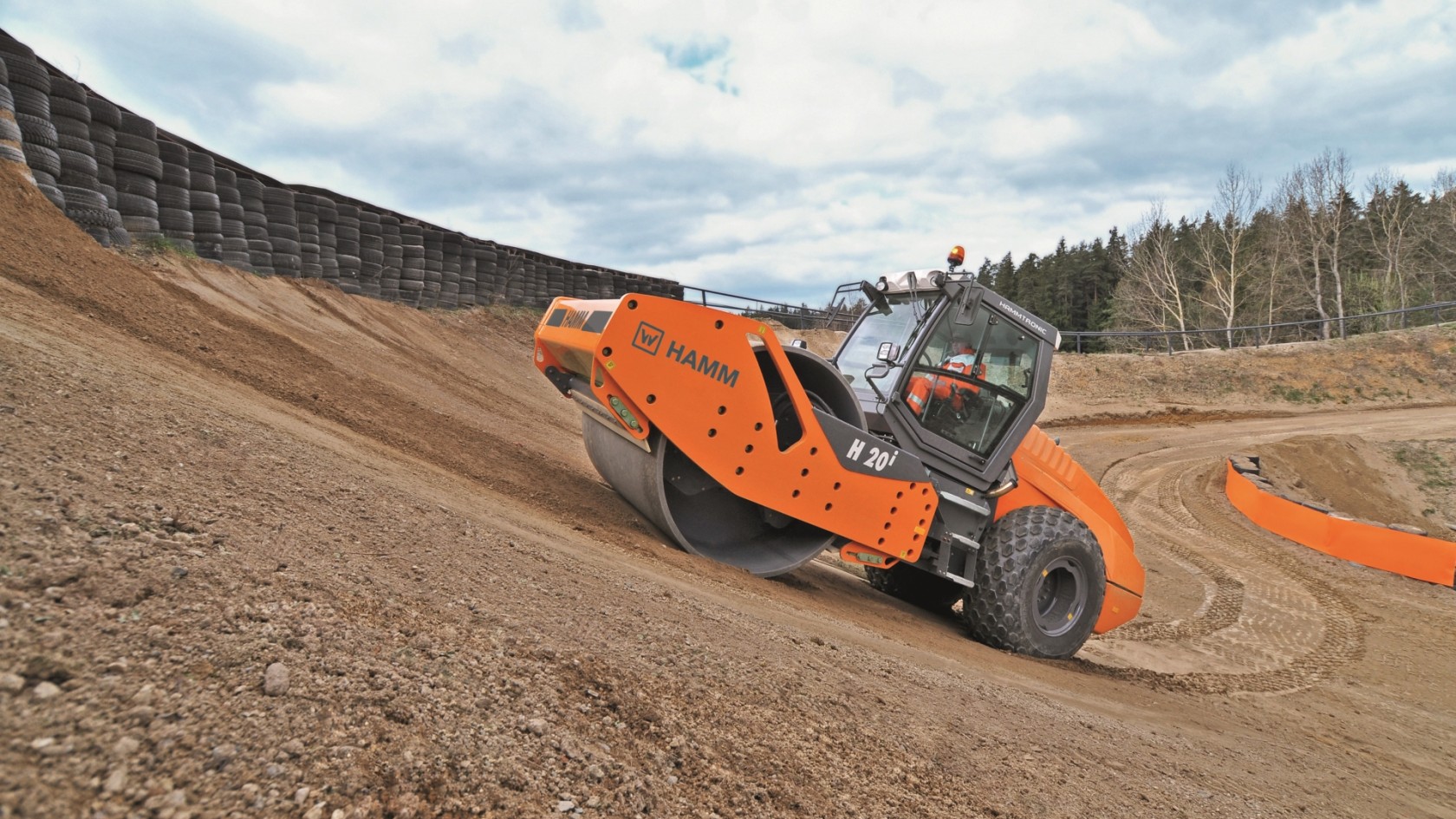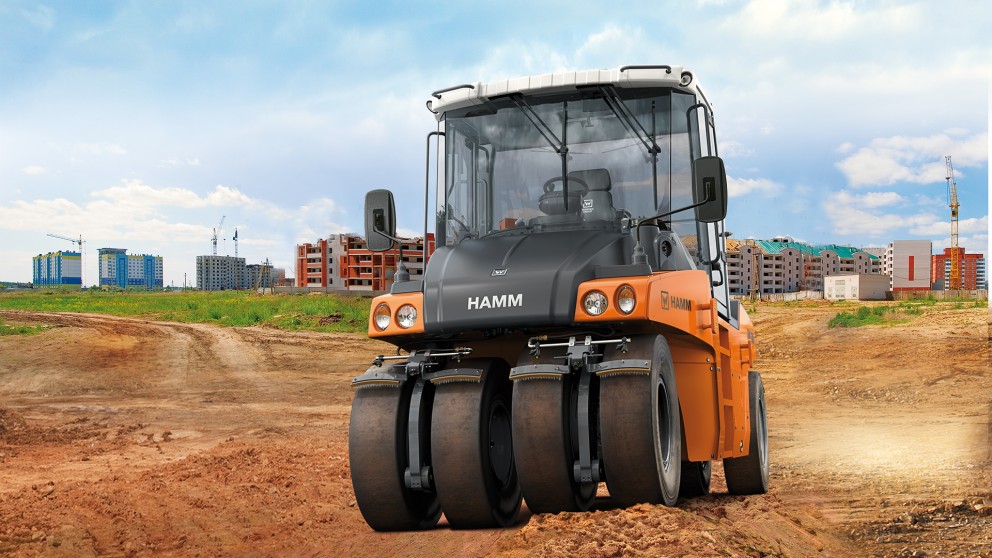Soil Compaction


Nature doesn’t always provide the ideal foundation for the construction of roads: natural rock. In the majority of cases, the ground is unstable, offering insufficient bearing capacity. Earthmoving operations are therefore usually the first step in the construction of a new road. When the course has been defined and set out, the ground underlying the new road needs to be prepared.
Compaction is the single most important process in soil construction. Its job is to reduce the volume of pores in the soil to be compacted, which are filled with water and air. Compaction will give soil the desired properties: Its resistance to stresses induced by traffic and climate will be improved by increasing its stability while simultaneously reducing its tendency to swell due to water absorption. The latter will additionally make the soil resistant to frost.
“HAMM offers an extensive range of products for all areas of earthworks and stands for sophisticated machine and compaction technology.”
HAMM CompactorsThe process is different for different types of soil. Experts distinguish between cohesive and non-cohesive soils. In cohesive soils like loam, clay or silt, the particles in the soil bond to one another. In non-cohesive soils like gravel or sand, the particles lie side by side without bonding. Soil types can be distinguished as follows in terms of compactability: water-retaining soils, fine grained cohesive soils, coarse grained non-cohesive soils, fine and coarse grained mixed soils, and rock.
Dynamic compaction with vibrating or oscillating rollers has proved particularly effective in earthworks, as it compacts the soil through the combination of vibrations from the roller drum and the weight of the roller.
The intensity of compaction is governed by three influencing factors: displacement of the roller drum, meaning the amplitude of the vibration or oscillation, rate of recurrence of the vibration or oscillation, meaning the frequency, and duration, meaning the roller’s travel speed. When these parameters are set correctly, the specified density can be achieved in considerably less roller passes.
Rubber-tyred roller GRW 280: With this machine, Hamm newly defined the rubber-tyred rollers featuring perfect visibility, intuitive operation and an extremely flexible ballast design.
Cohesive soils are best compacted using compactors with padfoot roller drums and high amplitudes, while non-cohesive soils are more effectively compacted with smooth roller drums and lower amplitudes. The ground is then ready to be paved – provided that it does not still contain too much moisture. In that case, it must additionally be stabilized.
